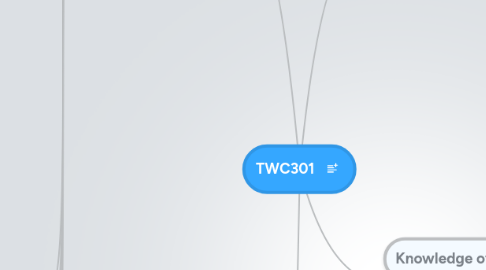
1. Rhetorical Knowledge
1.1. Identify, articulate, and focus on a defined purpose
1.2. Respond to the need of the appropriate audience
1.2.1. Learn how to say things differently or visually alter things to change how the message comes across to specific audiences (C1)
1.2.1.1. learn to properly use balance to convey the meaning I am trying to portray. (C4)
1.3. Respond appropriately to different rhetorical situations
1.3.1. Learn how to do instructional writing
1.3.1.1. focus on technical writing and "how to" so that they are clear, concise, and get the job done.
1.4. Use conventions of format and structure appropriate to the rhetorical situation
1.4.1. New node
1.4.1.1. learn the different meaning of design such as color, shape, etc (C1)
1.4.1.1.1. Properly use color, contrast, font type to emphasize certain points (C2)
1.4.1.1.2. Master visual concepts such as a visual "play on words" or having the word itself illustrate the concept. (C2)
1.4.1.1.3. Also understand how the words and objects placement matter and affect the visual interpretation. (C2)
1.4.1.2. Learn to appropriately balance my designs (C4)
1.4.1.2.1. Master the importance of "white space" (C4)
1.4.1.2.2. balance the design through color as well as graphics/figures (C4)
1.4.1.2.3. See also how font and text can balance the design. (C4)
1.4.1.3. Learn to use alignment to make it more visually appealing (C5)
1.4.1.3.1. use horizontal alignment and vertical alignment to make it more appealing (C5)
1.4.1.3.2. Master using left, right, or center alignment to convey a certain meaning and get readers to follow a visual pattern. (C5)
1.4.1.3.3. use grid structures when creating designs (C5)
1.4.1.4. learn and master repetition in my designs (C6)
1.4.1.4.1. Learn to use repetition in text to reinforce messages (C6)
1.4.1.4.2. Learn how to unify a group by using the same graphics (C6)
1.4.1.4.3. Use the Gestalt theory in designs (C6)
1.4.1.5. learn to use flow in my designs (C7)
1.4.1.5.1. Use verbal flow appropriately (C7)
1.4.1.5.2. Use visual flow appropriately. (C7)
1.5. Adopt appropriate voice, tone, and level of formality
1.6. Understand how each genre helps to shape writing and how readers respond to it
1.6.1. Understand the impact these would have in the professional world and also personal
1.7. Write in multiple genres
1.7.1. write a comic tutorial successfully
1.8. Understand the role of a variety of technologies/media in accessing, retrieving, managing, and communicating information
1.9. Use appropriate technologies to organize, present, and communicate information to address a range of audiences, purposes, and genres
1.9.1. Learn to successfully use and navigate these technologies
1.9.2. Understand when each genre is appropriate and best suited for the audience or goal at hand
2. Critical Thinking, Reading, and Writing
2.1. Use information, writing, and reading for inquiry, learning, thinking, and communicating
2.2. Integrate previously held beliefs, assumptions, and knowledge with new information and the ideas of others to accomplish a specific purpose within a context
2.2.1. Understand how to write for the purpose, whether that be to persuade or to educate.
3. Processes
3.1. Be aware that it usually takes multiple drafts to create and complete a successful text
3.2. Develop flexible strategies for generating, revising, editing, and proof-reading
3.3. Understand the collaborative and social aspects of research and writing processes
3.3.1. Learn to write better in a group setting
3.4. Use appropriate technologies to manage data and information collected or generated for future use
4. Knowledge of Conventions
4.1. Learn common formats for different genres
4.1.1. Learn also where to find these formats and when appropriate to use them (C1)
4.2. Develop knowledge of genre conventions ranging from structure and paragraphing to tone and mechanics
4.3. Understand and apply legal and ethical uses of information and technology including copyright and intellectual property
4.3.1. Only copyright owner has the right to use it, make sure that I am checking this in my work.
4.3.2. Check for copyright of books, music, dance, movies, etc
4.3.3. learn and focus on searching from the public domain
4.3.4. Use the Code of best practices in Fair Use to determine if use is appropriate
4.3.5. Learn to navigate and use creative commons for my designs as they are not copyright
